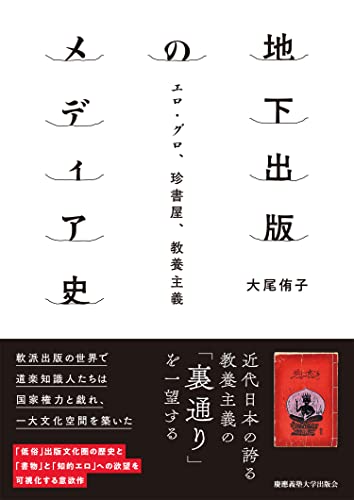14 0 0 0 OA 「白ポスト」はいかに“使われた”か? 1960-70年代の悪書追放運動におけるモノの位相
- 著者
- 大尾 侑子
- 出版者
- 日本メディア学会
- 雑誌
- マス・コミュニケーション研究 (ISSN:13411306)
- 巻号頁・発行日
- vol.100, pp.143-162, 2022-01-31 (Released:2022-03-29)
After World War II, an action called the “Campaign against Bad Books (Akusho Tsuihou Undou),” rejected men’s entertainment/pornographic magazines, led by many mothers’ groups, police, and the government in Japan. As a part of this movement, in 1963, the “White Post Box” was placed in Amagasaki City, Kobe Prefecture, to collect “bad books.” This post box subsequently emerged in Tokyo in 1966 and spread to many other prefectures in the late 1960s. However, it is rare to see such a post box nowadays, and their number has been decreasing nationwide since the 1980s. This article discusses how this post box was omnipresent and used in the 1960s and the 1970s by exploring mass media discourses and representations. Mothers expected this box to serve as a gatekeeper in protecting underage children from so-called, “harmful books,” which were brought into their homes by the fathers. The police and the national government also wanted this equipment to become a symbol of the “Campaign against Bad Books” movement, to activate and accelerate this atmosphere. The reality differed from their expectations; people often used it as a garbage can. As the number of harmful books did not gradually decrease, the actors of this movement and mass media became indifferent to this box. Unfortunately, some people began to steal its contents, and finally, people started to consider it useless in the early 1970s. In conclusion, the White Post Box was a physical media that worked to visualize the discourse of “harmful media/non-harmful media” through its own body, by being placed in the public space. In other words, this equipment further contributed to this latent function than to a manifest function: gatekeeping to protect children from “bad books.”
10 0 0 0 OA 「内容見本」の季節 明治期以降の成立過程と「読み物」的受容
- 著者
- 大尾 侑子
- 出版者
- 日本メディア学会
- 雑誌
- メディア研究 (ISSN:27581047)
- 巻号頁・発行日
- vol.103, pp.91-111, 2023-07-31 (Released:2023-10-24)
- 参考文献数
- 24
A "Naiyou-Mihon" is a promotional pamphlet that announces the publication of a large-volume books, such as a complete work or a series of books. In Japan, they were distributed in large quantities during the "The Boom of One-Yen Complete Collection (Enpon-Boom)" of the 1920s and the period of rapid economic growth after World War II. The technological and social circumstances surrounding media development have not been fully explored. The purpose of this paper is not to derive a theory about an author or work from what was written in each pamphlet. Instead, we seek to clarify the establishment process and the medium specificity of the "Naiyou-Mihon" itself. In this paper, we examined the establishment process of Naiyou-Mihon by analyzing newspaper articles and pamphlets from the Meiji era and beyond. It became clear that the Naiyou-Mihon appeared in the early 1880s against the background of the establishment of a Publication by subscription. It worked as a guidebook for readers living in local area how to make purchase. Initially, the term "Naiyou-Mihon" was not used commonly, and it did not appear in the newspaper until the 1910s. Later, in the Taisho period (1912-1926), the format (i.e., celebrity endorsements, specimen pages, and binding photographs) became fixed, and through the popularity of complete works of literature, it became widely known. Later, in the early Showa period, the term "Naiyou-Mihon" appeared in newspaper advertisements and was distributed in large quantities as a means of advertising. Then, how were these items accepted? In general, "Naiyou-Mihon" are not preserved by public institutions, but are disposable: ephemera in nature. However, we found that certain readers who considered these media as "reading material" and used it as a tool for literary education and edification as well.
7 0 0 0 OA 「直筆原稿」のメディア論 ―作家/プロレタリア的身体の痕跡を炙り出す
- 著者
- 大尾 侑子
- 出版者
- 日本出版学会
- 雑誌
- 出版研究 (ISSN:03853659)
- 巻号頁・発行日
- vol.52, pp.47-70, 2021 (Released:2023-03-31)
本稿は1925年創刊の雑誌『文藝市場』による街頭での直筆原稿叩き売りに着目し,この実践が有名性に支配された文学界への批判であり,その背景には「直筆原稿」を作家の肉体労働の痕跡とみなし,商品価値を認めるべきだとする同人の主張があったことを明らかにした.また,売上金を共同印刷争議に寄付し,構成派的な「活字」表現を駆使するなど,この試みが労働運動とプロレタリア芸術運動との交点にあったことも指摘した.
- 著者
- 大尾 侑子
- 出版者
- ソシオロゴス編集委員会
- 雑誌
- ソシオロゴス = Sociologos (ISSN:02853531)
- 巻号頁・発行日
- no.40, pp.111-132, 2016
- 著者
- 大尾 侑子 鈴木 麻記
- 出版者
- 東京大学大学院情報学環
- 雑誌
- 情報学研究 : 学環 : 東京大学大学院情報学環紀要 = Journal of information studies (ISSN:1880697X)
- 巻号頁・発行日
- no.89, pp.51-65, 2015-10-30
査読研究論文
1 0 0 0 地下出版のメディア史 : エロ・グロ、珍書屋、教養主義
- 著者
- 大尾 侑子 鈴木 麻記
- 出版者
- 東京大学大学院情報学環
- 雑誌
- 情報学研究 : 学環 : 東京大学大学院情報学環紀要 (ISSN:1880697X)
- 巻号頁・発行日
- vol.89, pp.51-65, 2015-10-30
査読研究論文
